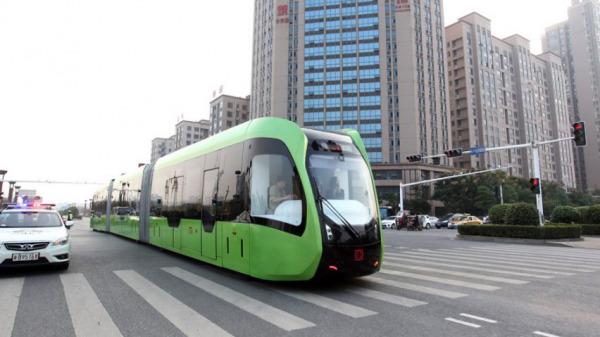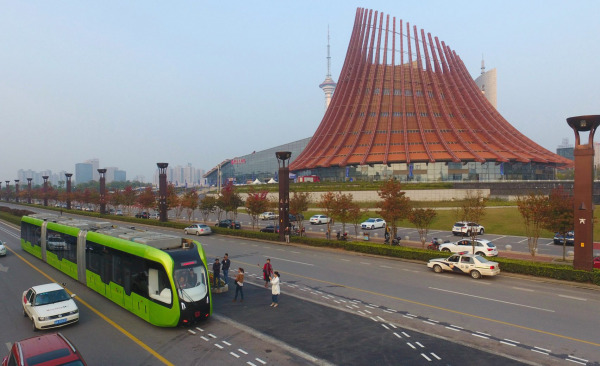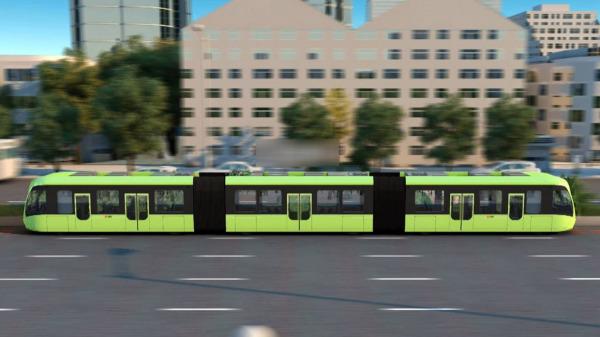The Autonomous Rail Rapid Transit (ART) is being dubbed by Chinese state media the “world’s first smart rapid rail bus,”. The train/bus hybrid uses sensors that can detect white, dotted lines painted on the road to determine the dimensions of the road and make a virtual track for itself to ride along.
CRRC began developing the ART back in 2013 as yet another way to ease hellish congestion in China’s crowded urban centers. It is being billed as a cheaper alternative to the metro or trams, while also being more environmentally friendly. It combines the economical ease of bus systems with the modularity of subway trains, as well as the convenience and safety of autonomy.
The ART officially started its test run on a short track in Zhuzhou on Monday. The city has plans for the completion of a longer, 6.5-kilometer track through downtown next year. The mass-transit vehicle’s size can change because carriages can be added or removed.

The battery-powered ART is capable of holding up to 307 passengers and hitting speeds of up to 70 kilometers per hour.

One ART bus will cost about $2.2 million and can travel about 15 miles after 10 minutes of charging. Zhuzhou City in Hunan Province expects to start using ART downtown next year. It is estimated to cost around 1/5 the price of a traditional tram system per mile. It uses stabilizing technology like active suspension systems which help to make it steadier than a city bus.

“So, I went there thinking, this is going to be something hiding like a bus,” said Peter Newman, Professor of Sustainability at Curtin University in Perth, Australia. “It’ll look like a light rail, but it is, in fact, a bus. But when I rode it, it was dramatically different. I could find myself feeling like I was on a train.”
ART is an excellent option for smaller to medium-sized cities that cannot afford to invest in the infrastructure necessary to have a subway system.


